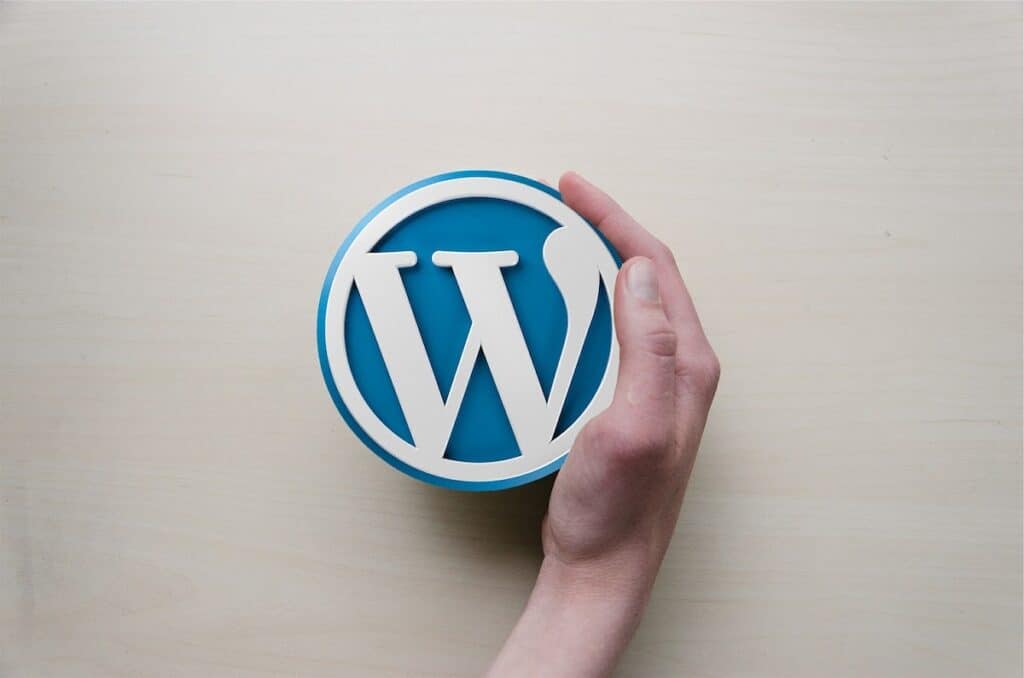
How to Code a Website from Start to Finish
Behind each website, there is a team of programmers working to maintain and optimize its services. If you like technology and would like to become a web developer or work in the field of web development, you should pay attention to this step-by-step coding guide. If you are an absolute beginner, all the better.
You will not only learn about the basic code and tools to create a website, but you’ll also learn about schools and online coding courses that can help teach you the skills necessary to succeed in the industry.
Website Coding Languages
Learning a programming language is the first step. Coding is the process of using specific language systems to talk to a computer and create functions on a website. It can seem complex, but once you gain a basic understanding of each language, you will be capable of creating professional-looking websites.
Some of the most famous languages are HTML, CSS, Java, JavaScript, Node.js, .NET, SQL, PHP, and Python. Web designers typically communicate with business owners to constantly modify and update the services and functions of the website.
Using HTML and CSS
If you want to get a job as a web designer, learning HTML, also known as HyperText Markup Language, and CSS, short for Cascading Style Sheets, is a great first step.
HTML is a common programming application created by the World Wide Web Consortium (WC3). CSS has more to do with the visual elements of a website. CSS offers precise control over this aspect. Documents in CSS take up less space as well, which saves space on your computer.
You can use CSS in HTML and XHTML web documents. Many programmers use both languages to develop mobile and web applications. Expertise in CSS, HTML, and XHTML is in high demand in the tech industry. If you can use these essential skills to create websites, job opportunities will open up for you.
Understand HTML Document Structure
Most lines of code in HTML follow a universal structure. Understanding this structure is the first step in gaining proficiency in HTML. Each HTML document begins with a line that explains the specific HTML version for that project.
After that line, you create a section known as the head, which is where you declare the document’s content type. The body section follows and contains the actual information of the document and dictates what the user sees on their screen.
Get Familiar with CSS Selectors
You can’t learn CSS and HTML without learning about selectors. CSS selectors define which HTML elements of a web page will be stylized. The different selectors allow you to stylize chunks of content at the same time instead of having to stylize each piece separately.
The selectors allow you to group content based on its attributes and its relation to other content. Generally, there are five main types of selectors. They are element selectors, ID selectors, class selectors, universal selectors, and group selectors.
JavaScript: What Is It and What Are Its Applications?
JavaScript is a dynamic programming language that creates the user interface for websites and apps. It is most often used to create websites and enables programmers to add dynamic content and special effects.
JavaScript is responsible for much of the interactive content on modern platforms that users enjoy. Some of the elementary functions of JavaScript are to communicate with servers, create dynamic interfaces, and act as a conduit for website updates. Although it seems like a complex tool, it is easy to learn the basics of JavaScript.
How to Code a Website: Step-by-Step Guide
In this section, we present a step-by-step guide to creating a website with HTML and CSS. Although we cover simple website design, the process described below is essential for creating dynamic websites as well.
Step 1: Choose a Code Editor
Your first task will be to choose a code editor to create the project. Your decision depends on the functions you need for the website. Code editors are systems that use special functions to create and manage code. You should take into account types of code and source code, among other factors. The main goal is to create clean code that is easy to process.
Some of the most famous code editors are Sublime Text, Atom, Notepad++, Visual Studio Core, and Vim. Many of these options are free, but some cost up to $80.
Step 2: Organize Your Ideas
After selecting your preferred code editor, your next goal is to organize and plan your ideas. If you’re building a website for a company, listen to their ideas and ask for a sketch of what they’re looking for.
Analyze the content of other websites. Write some of their functions down and contemplate if they’ll work for your website. If you write down each point, you will be able to better organize the coding process.
Step 3: Make a Template
After creating a sketch with a text tool, it’s time to start coding. A template is the first project script for the website. Create a new folder on your computer, write your code, and test the results in an HTML and CSS file.
This design template acts as the first part of the original design of your website. Hire a graphic designer if necessary, as it may make the difference between a standard-looking website and a perfect one.
Step 4: Create Elements and Functions
One of the best ways to start adding functions to your website is with Semantic HTML elements or elements that clearly describe their purpose and function. Headers, a navigation bar, a browser window, sections, and footers are some of the most common semantic elements.
You should also have a plan laid out for the website’s functions to help you correct mistakes further along in the process. In this case, JavaScript and HTML help you maintain dynamic websites that are easy to manipulate and update.
Step 5: Make a Content Repertoire
Once the fundamental base of the website is intact, you need to create a repertoire of content. Create a folder on your computer to organize all of your available content. The content is the most important part of the website’s identity.
In the folder, you can include sound effects, images, videos, and any multimedia content. You can also simply use fake files for testing if you don’t have all your content gathered.
Step 6: Enter Fake Content
After testing functions, the next goal is to enter content into the code editor. In programming, it is common to use fake text and fictional content to preview what the final result will look like.
One of the advantages of this step is that you can eliminate weak aspects or add new aspects that were not in the original plan.
Step 7: Add Original Content
After seeing the initial result with the fake content, it’s time to add the real content. Remember that after you add each piece, you should preview how it will look to the user. If you see any errors, write them down in a text document and correct them later.
Currently, SEO processes are governed by strict standards that can potentially increase traffic to a domain. If your website has useful elements for the Internet community, you will be rewarded with more traffic. The content and services of the website must be original, creative, useful, and easy to understand.
Step 8: Begin Graphic Website Design
Now you can lay out the visual part of the website using CSS. The process is similar to coding. You simply create a sample, add it to the code, and test its functions.
You will have to pay attention to things like width, height, display, padding, margins, and position. These functions allow the images to have the appropriate proportions for the website.
Step 9: Add Style and Colors
Style and color are some of the most notable elements on any website. It is useful to know the concepts of marketing, which you can learn at a digital marketing bootcamp. A website is a fundamental part of the identity of a company, person, or product. Users within this digital space must be treated to a unique experience.
In the CSS documents of the original file, you must store and apply the color background and image functions. Design is a sensitive subject and often requires change, especially when it is an assignment for demanding clients. For that reason, you should study color palettes, company goals, competitors’ websites, and design trends in the marketplace.
Step 10: Test All the Website Features
After including the images and all the elements in your coding document, it is time to review all the functions within the web page. Pretend you are a user and test all the site’s functions. Try accessing the website from different digital devices to ensure it works on all platforms.
Avoid hard-to-understand functions, hidden buttons, tiny fonts, or heavy resources that slow down loading times. People are looking for competently built websites that help them receive an answer or a service in just a few steps.
Using Website Builders

You can also use website builders to build a website if you don’t have the coding expertise. Most professional web developers use a combination of coding and website builders. Using a website builder simplifies the process and is quicker than coding one yourself.
From the customer’s point of view, a website builder can be a great alternative to save time and money since a subscription to these services is cheaper than paying to code a website from scratch.
A website builder is a tool with pre-made themes for websites. Through a selection of designs and styles, the device creates the appearance and functions according to the owner’s tastes. One of the most famous website builders is WordPress. According to market research from W3Techs, WordPress powers 42.5 percent of all websites.
However, programming allows you to be more exact when it comes to results and functions. While a website builder has limited tools and plugins, a web designer can create new, creative, and dynamic elements that are easy to update and monitor.
The Benefits of WordPress
Millions of users in the world work with WordPress, which was created in 2003. This tool has a good reputation for its results and easy-to-understand functions. With WordPress, you can access free tools and get efficient results. The platform is versatile, secure, and open source.
If you want a personalized website, WordPress allows you to work with the best plugins on the market. In addition, the tool is focused on security and content management. No matter the type of website, with WordPress you can easily manage content, monitor results, and update services.
The fast interface and the ease of use are two crucial characteristics that explain the success of WordPress. In addition, this website builder’s strong market position gives WordPress websites certain advantages when it comes to search engine optimization (SEO).
Top Web Development Resources
If you want to know the best places on the web to learn how to code for free, for a small fee, or in a bootcamp-style format, check the list below.
W3Schools
W3Schools is an educational platform created by Refsnes Data. You can find a wide variety of online courses and content related to programming, software development, and web design.
The school offers Java, Python, HTML, and SQL training. Most of the core courses are free, but you can access advanced content with self-paced paid programs, which range from $20 to $190.
Code Academy
Code Academy, more familiarly known as Codecademy, is an online coding bootcamp where you can learn web development fundamentals. In addition to Python and Java, you can learn data science techniques. Here you can access online coding classes to learn basic and advanced programming techniques.
Coding Dojo
If you want to access advanced educational programs, consider Coding Dojo. If you sign up for this bootcamp, you can choose from four web development learning options, all of which are hosted online. There are accelerated, flex, and self-paced programs, and prices range from free to $8,995.
Ironhack
If you want to master HTML, CSS, Java, React, and more, then Ironhack may be a good choice for you. Its online web development programs can turn you into a full-stack developer in just nine weeks.
Lighthouse Labs
At Lighthouse Labs, you can get all the information and resources necessary to work as a web designer. The online web development course offers the fundamental tools you need to work in the industry. You can also choose introductory programs if you are a complete beginner. The school provides personalized tutors, job assistance, and special coding events.
Start Coding!
If you have the tools and motivation, then it’s time to start coding. Remember, education and practice are two crucial elements in determining your success in the tech industry. Coding is a valuable skill, and learning about web development can improve your personal projects and help you in your job hunt. Follow our steps and start creating your first website today.



